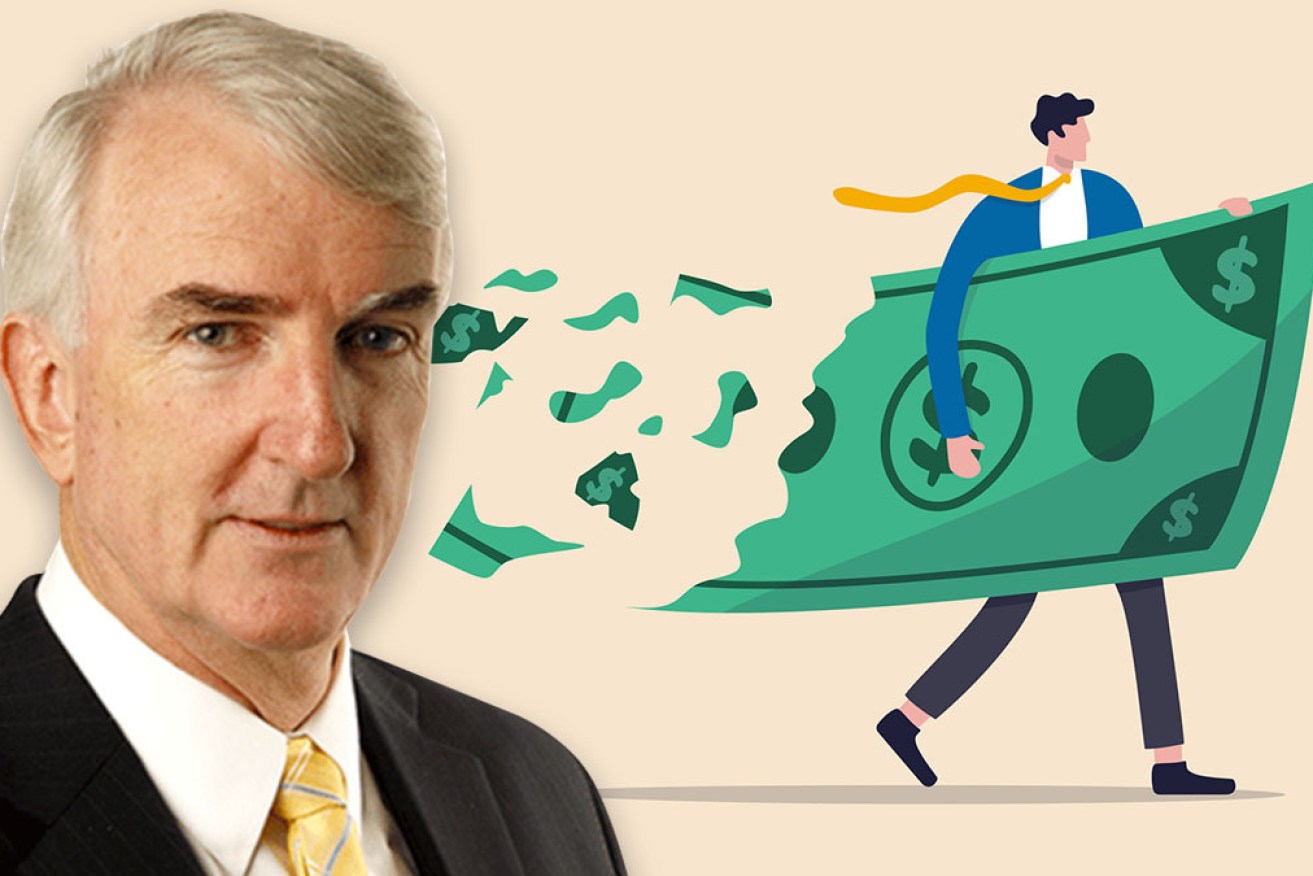Michael Pascoe: No, there is no wages growth over the next four years


Real, take-home wages will be lower in 2024-25 than they were last year, Michael Pascoe says. Photo: TND
Not for the first time, the Morrison government’s figures either don’t quite add up or are not true.
Contrary to numerous reports of Josh Frydenberg’s MYEFO (mid-year economic and fiscal outlook), Treasury does not expect growth in real, take-home wages over the four years of the “forward estimates”.
Treasury certainly doesn’t spell it out, but its forecasts mean real, take-home wages will be lower in 2024-25 than they were last year – they will not have kept pace with inflation.
And if you combine the numbers in MYEFO with Treasury’s Centre for Population annual population statement, the government’s “one million jobs” claim isn’t quite what it seems and proposed migration numbers will have to be higher than suggested.
Not that many people will have noticed, the government’s spin generally being accepted at face value and few folk have the knowledge to question the population and migration claims.

The wages claims of Treasurer Josh Frydenberg don’t stack up.
Fairly typical of government’s successful pre-MYEFO marketing was: “The update will also forecast an associated uptick in wages growth of about 11 per cent between now and 2024-25, which is up from the 9 per cent forecast in the May budget, and worth about $10,000 to those currently earning $90,000 a year.”
Sounds good, doesn’t it? But it’s the old trick of adding up a number of years and ignoring inflation and taxation, never mind interaction with the transfer system.
The document itself forecast “wages growth to outstrip inflation over the four-year forward estimates”.
But that was only for pre-tax wages. After-tax is still going backwards over that period.
A quick example: Mr Frydenberg is claiming inflation next financial year will be 2.5 per cent and the wages price index will grow by 2.75 per cent – wages growth greater than inflation! Huzzar!
But for someone on, say, $80,000 a year, their take-home wage after income tax and Medicare is $61,933.
Their gross wage can rise by 2.75 per cent to $82,200, but their take-home pay only increases by 2.33 per cent to $63,374. They are still behind the inflation rate.
And this is keeping it very simple – it’s often much worse given the regressive nature of much of the transfer system.
MYEFO’s forecast of wages rising by 2.25 per cent this financial year turns into a take-home increase of 1.9 per cent compared with an inflation rate of 2.75 per cent.

MYEFO’s forecast of wages rising by 2.25 per cent turns into a take-home increase of 1.9 per cent – with an 2.75 per cent inflation rate. Photo: Getty
The forecast of a 3 per cent wage rise in 2023-24 turns into a fraction more than 2.5 per cent after tax – about the same as the inflation rate.
Only in 2024-25 (too far away to have any chance of being accurately forecast) is there the promise of a genuine increase.
The 3.25 per cent pre-tax rise is worth 2.75 per cent after tax, better than the predicted 2.5 per cent inflation – but that quarter of a per cent doesn’t make up for the shortfalls in the first half of the forward estimates.
That’s the simple mathematics that eludes (or is wilfully ignored by) Treasury boffins and the commentariat.
Trickier is what actually might happen with wages growth as business steps up its campaign for bigger, faster immigration.
The business lobby and individual employers loudly claim there is a shortage of skills, that we need to quickly open the doors again to get work done.
It is true that there are skill shortages in a number of areas – but it is not an unreasonable assumption that employers’ main motivation is to keep down pay rises flowing from the shortages.
Better to import someone or grab a backpacker than pay the premium necessary to lure away someone else’s worker.
For all that the great and good nod along with the Reserve Bank when it talks about the need to get wages growth up around 3.5 per cent, employers – and least of all the federal government – don’t want to pay it.
We’ve just had the example of the Transport Workers Union taking industrial action to win (among other things) a pay rise of 3 per cent a year for three years. On a take-home basis, that won’t quite match the inflation rate.
We are seeing real wage increases in select areas where the labour market is tightest and workers are not strapped in to multi-year EBAs, but there’s only hope for rather than belief in the sort of wages growth the economy requires, as the RBA made clear in its board minutes released on Tuesday.
“Members noted that private sector wages growth had increased in the September quarter, but only to around its pre-pandemic level,” the RBA stated.
“Only professional services had recorded wages growth in excess of 3 per cent. Public sector wages growth remained subdued.
“Information from the bank’s liaison program suggested that firms were generally expecting wage increases over the coming year of around 2½ per cent, broadly in line with surveys of unions’ expectations; the distribution of firms’ expectations for wages growth was also similar to the pre-pandemic pattern.”
That 2.5 per cent pre-tax rise shrinks to 2.1 per cent after tax – another year of going backwards.
So what does the government’s MYEFO immigration story look like in this wages climate?
It doesn’t quite add up, according to immigration and population expert Abul Rizvi.

Dr Abul Rizvi. Photo: AAP
Given the MYEFO forecasts of only a tiny improvement in the participation rate and not much of a drop in the unemployment rate, Dr Rizvi believes the government won’t make its “one million jobs” promise without significantly increasing expected migration levels.
In normal times, all things being equal, migration tends to be a net creator of jobs and isn’t supposed to lower wages, other than for those at the bottom of the employment pile.
These are not normal times and all things are far from being equal – they rarely are.
“The government is under severe pressure from business lobby groups to make further changes to visa policy settings to be more facilitative, particularly if unions become more active in demanding higher wages,” Dr Rizvi wrote in The Conversation.
“But the government should avoid being panicked into short-term visa policy changes that would have long-term consequences, particularly if these result in a build up of long-term temporary migrants who struggle to secure permanent residence.
“Ministers Alex Hawke, Alan Tudge, Marise Payne and David Littleproud have already shown a penchant for policies such as these.”
So here we are again, the government spin of its economic story being faithfully reproduced and doubts about the veracity of key underlying numbers.








